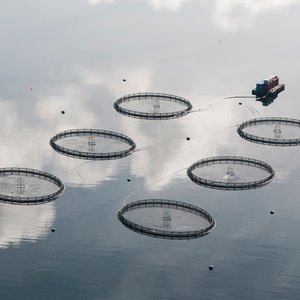Over the 16th week ending Apr. 16, the earlier price uptrend for Chinese imported fishmeal mostly halted except for slight rises in individual areas, along with weekly fishmeal off-takes from main Chinese ports declining by 15% from a week earlier to 10,750 tonnes. The halt in price uptrend mainly arose from cautious fishmeal purchases from feed mills. In addition, continued weakness in local soymeal prices further contributed to the wait-and-see attitudes towards fishmeal purchases, suppressing the uptrend in fishmeal prices. However, dominant fishmeal suppliers' calmness towards fishmeal sales helped fishmeal prices keep relatively stability.
This week, market quotes for imported fishmeal mostly kept unchanged at main Chinese ports including Dalian, Tianjin, Shanghai and Huangpu with the general levels standing at RMB6,150-6,350/tonnes along with much higher quotes of RMB6,400/tonnes at Tianjin and Dalian ports for new arrivals. Meanwhile, prices for fishmeal at South China's Zhanjiang Port as well as steam-dried fishmeal at Huangpu port saw rises of RMB50-100/tonnes to the respective levels of RMB6,350/tonnes and RMB6,500-7,000/tonnes.
With earlier market rallies for feedstuff raw materials while without corresponding price gains for manufactured feedstuff, most feed mills came to be more cautious towards the purchases of feedstuff raw materials, playing as the leading factor in capping upward movement in fishmeal prices. Fishmeal stocks, built up by large-sized feed mills in February or early March when fishmeal prices were comparatively lower, could cover their demand at least till early May, so that they were not in bad need of replenishing their stocks at present. And as to small and medium-sized feed mills, they continued to make hand-to-mouth purchases despite limited stocks because of limited buying ability. In addition, current hiked prices also weakened their interests in additional fishmeal buy. As a result, fishmeal trade came to slow down along with decreased inquires.
Besides, continued weakness in local soymeal market for about three weeks further contributed to feed mills' wait-and-see attitudes towards fishmeal purchases in expectation of fishmeal price drops. Due to recent volatility in CBT soybean futures as well as local sluggish trade, most oil plants had consecutively lowered their soymeal offers from the general level of RMB3,600-3,700/tonnes on Mar. 25 to the current RMB3,400-3,500/tonnes in most eastern/southern areas.
In spite of declines in fishmeal off-takes as well as inquiries, most dominant fishmeal suppliers still appeared quite calm and were in no hurry in cashing in their fishmeal stocks, curbing fishmeal prices from going down. Due to accelerated fishmeal sales by small traders under the pressure of decreasing fishmeal trade and weakening soymeal, most of the remaining stocks of imported fishmeal available for sales had been mostly in the hands of those dominant fishmeal suppliers, being supportive to their joint control over Chinese fishmeal market. In addition, in view of the declining fishmeal stocks at main Chinese ports while strengthening demand from growing aquaculture animals, they continued to hold bullish sentiment over Chinese fishmeal market.
Given the pressure from weak soymeal market as well as expectedly increasing supply from new fishing season in Peru, JCI anticipates that fishmeal prices are hard to see marked rises in the near future in spite of the strengthening demand from the full development of aquaculture farming industry.
Note: All the prices for imported fishmeal are quoted on the basis of DDP.
www.jcichina.com
info@chinajci.com
Shanghai JC Intelligence Co., Ltd











